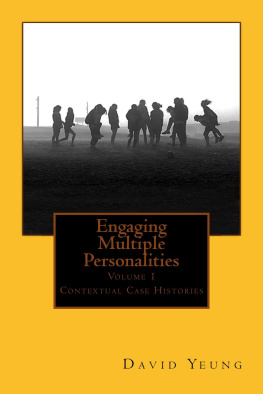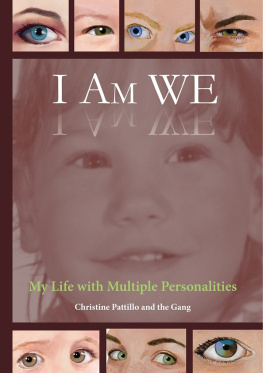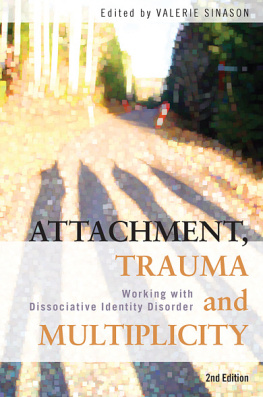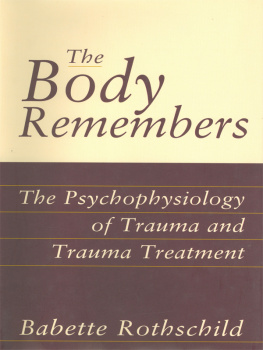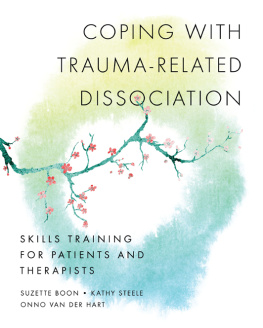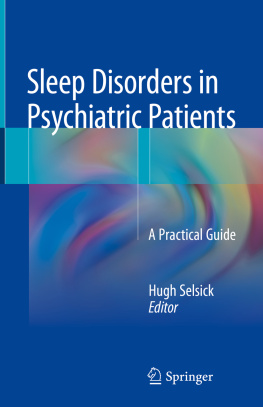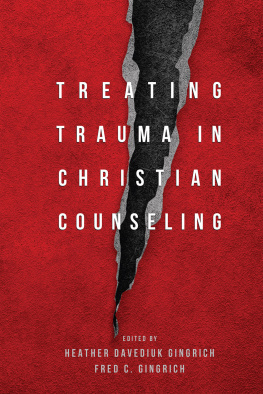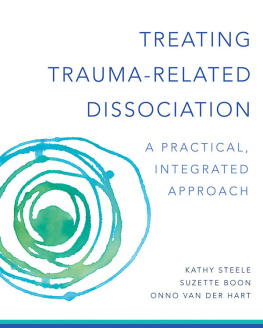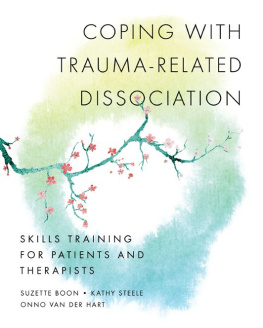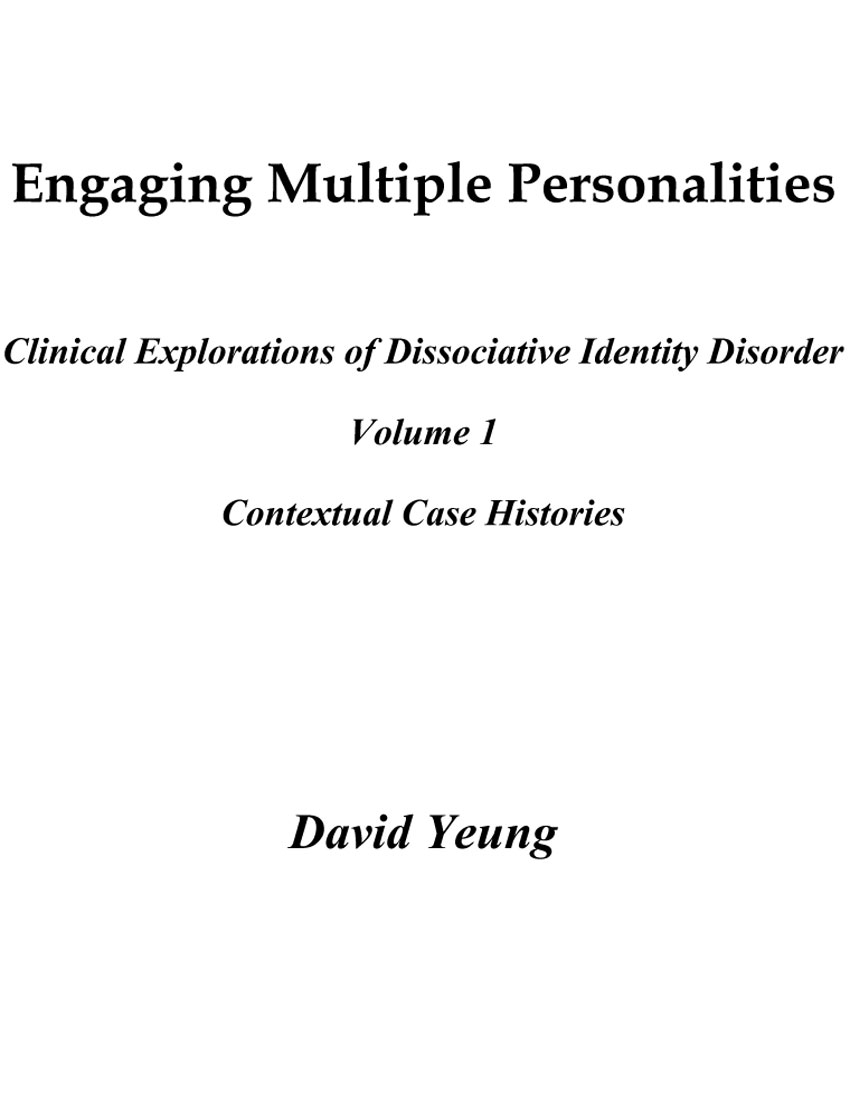
Copyright 2014
by David Yeung
All rights reserved
ISBN 978-1496154217
BISAC: Psychology / Psychopathology / Dissociative Identity Disorder
Dedication
M y patients all taught me so much, both about therapy and life itself.
This book is dedicated to all those I was able to help and to those, to my regret, that did not benefit from my efforts.
Contents
Preface
Cases of Multiple Personality Disorder (MPD), also known as Dissociative Identity Disorder (DID), have always been regarded as rare in mainstream psychiatry. In fact, many mental health professionals have chosen to deny its very existence. News media reports generally include a disclaimer that characterizes it as a controversial diagnosis. This facilitates a dismissal of both the disorder as well as of the individuals afflicted by this condition.
The general public is bewildered and fascinated by DID. Through entertainment media, including books, television and movies, a distorted view of DID is often presented. While it may make for good entertainment, it fails to truly present the depth and intensity of the inherent trauma.
The two volumes in this series are not concerned with proving or disproving the existence of DID. My experience with a few dozen cases in one locale would not pass the vigorous scientific scrutiny required for establishing the clinical validity of any disorder. However, although retired, I remain concerned about the response of psychiatrists if and when a dissociative fragment of personality appears in the consulting room. I remain concerned about those patients presenting symptoms of depression, panic attacks, substance abuse, bulimia and anorexia who may be frightened to reveal a fragmented mind. Such practical considerations should be the foremost concern of every clinician.
Failure to consider the phenomenon of trauma and dissociation will lead to hopelessly yet tenaciously treating the presenting symptoms while ignoring the underlying problem. It will only prolong a patient's disability and suffering.
If inner conflicts are minimized, DID alters can learn to cooperate like a well-coordinated soccer team; where all the players work together for a common goal. Each member of a soccer team has a particular position, using a specific skill set. This is directly analogous to a cooperating DID system.
Over the course of more than four decades of practicing psychiatry, I acquired some skill in the recognition and treatment of DID. This series documents and distills the clinical experience gained on that journey. It is my hope that it will be of assistance to therapists working with DID so as to improve the care given to patients.
Engaging Multiple Personalities was also written to give confidence to individuals dealing with DID, so that they may gain their own insights to help support the healing process.
The case histories presented here are taken unembellished from my patient files. Nevertheless, I consciously refrained from presenting details that might trigger flashbacks in susceptible readers.
One should always keep in mind that ignoring past trauma simply will not help a patient. Therapists must gently assist the patient in safely engaging in trauma therapy, encouraging this whether or not the patient so wishes. DID patients can successfully engage in and profit from therapy, and by processing the impact of their past traumatic memory, they may reclaim their present.
Finally, when individuals suffering from DID are misdiagnosed, they utilize an extremely disproportionate share of social, health, police and other services. Through these case histories, it is hoped that government authorities will perceive the enormous economic as well as social benefits of the correct diagnosis and treatment of DID.
Warning
I f you know or suspect that you have experienced childhood abuse, please make sure you have a good network of support to turn to when exploring such a past. Please stop and ask for help if you feel any emotional turmoil arising when reading this book. While every effort has been made to omit materials that might trigger traumatic memory, the best protection is to have the support of a competent therapist to help process any such turmoil.
Acknowledgments
Ken Smith contributed insights gained from another side of DID; the spousal experience. This perspective further informed and supported the organization of this work. He has also provided various aspects of technical assistance. Sue Anne Cairns offered invaluable help in editing. Finally, my wife Moira, with her extensive experience in writing and editing, has given me much moral support and technical help.
Introduction
Dissociative Identity Disorder is a psychiatric diagnosis included in the DSM 5 under the name Multiple Personality Disorder, as used in DSMs published before 1994. These inclusions confirm that experts in the field worldwide regard DID/MPD as a mental health disorder that requires proper diagnosis and treatment.
After graduating from medical school in Hong Kong in the early 1960s, I received further training in psychiatry at preeminent hospitals in London, England. I then came to Canada and practiced psychiatry in a variety of settings: a veterans hospital, a teaching hospital, an old-fashioned 2,000 patient mental hospital, a short-stay residential crisis intervention facility, a general hospital, and an outpatient clinic. I finally settled into private practice.
In the beginning of my career, despite my education, training, and qualifications, I was ignorant about MPD. Through years of trial and error, I learned to recognize and treat patients with multiple personalities. It was a long and lonely journey of discovery.
I hope that by sharing my clinical experience through this series, new generations of therapists will come to understand the importance of correctly diagnosing DID and treating it appropriately.
Many DID patients display a ubiquitous depression, a thick smoke screen hiding the pathology of trauma and dissociation.
Once diagnosed as suffering from major depression or other mood disorders, they are quickly given prescriptions for anti-depressant medications. When there is little to no improvement, other anti-depressants are prescribed. Diagnosticians can easily end up characterizing their disorder as treatment resistant depression. Treatment resistant depression is a misnomer in this context. The depression is not a disease in itself but a symptom of DID. The result is therapeutic failure which is a consequence of attempting to treat the symptom rather than the core pathology. Labelling DID patients with treatment resistant depression leads to chemical based treatments, but DID related depression can indeed be treated. Effective treatment deals with the core issues of past unresolved trauma.
The result is therapeutic failure which is a consequence of attempting to treat the symptom rather than the core pathology. We must not confuse depression as a symptom with depression as the primary disease. Depression can be a normal emotional response to difficult life situations one may encounter. Depression can also be caused by many different illnesses. Finally, it can be a primary mood disorder. Proper treatment requires identifying the nature and cause of the depression. Fixating on eliminating depression while leaving the core pathology untouched does not help the patient.
The heart of DID therapy is engaging the alters on their own terms. This is what is detailed in each of the case histories.
I learned far more from my DID patients about identifying and treating the disorder than is ever taught in psychiatric training. It is my sincerest wish to preserve and pass on those insights. I have chosen to do so through the medium of a representative set of their case histories. These case histories are not amalgamations of several patients into one to prove particular points. Each is the actual history of a specific DID patient, taken directly from my notes of patient therapeutic sessions. The only substantive changes are the alteration of personally identifying features in order to protect the privacy of the individual patients.
Next page
